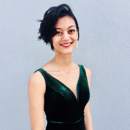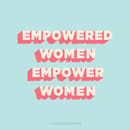Springtime is finally here, and everyone is finding themselves appropriately twitterpated, including the residents of Animal Kingdom.
Ever since the park debuted in 1998, Disney World’s Animal Kingdom has been known for putting their animals first; the park closes an hour earlier than the neighboring parks of Walt Disney World in order to tend to the animals, and visitors can witness this firsthand while at the park. Have you ever gotten something to eat at Animal Kingdom? If so, you’d notice that the straws used are made from paper and are biodegradable. You’d also notice that there are no plastic lids nor any balloons sold in Animal Kingdom. Unlike the neighboring Walt Disney World theme parks, the closing finale includes no fireworks as the bright lights and jarring noises may potentially upset the animals. Even the park’s location serves the animals’ best interests, as it is strategically isolated from other Walt Disney World theme parks in order to protect their animals from external disruptions, distractions and disturbances.
Despite the recent COVID-19 pandemic and resulting park closures, operations at Animal Kingdom have not slowed down in the slightest. As the theme park houses and showcases hundreds of live animals, a park closure does not include the animal care team. And thank goodness for that, because on Feb. 25, porcupine resident Peri gave birth to an adorable little porcupette. The porcupette, which has yet to be named, has had her quills sent for DNA testing, establishing her gender: it’s a girl! The precious porcupette can be seen in this official Disney Parks video. The porcupette’s little quills began hardening just hours after her birth, and the new mother-and-daughter duo is being closely monitored and cared for.
(For more information regarding baby porcupette, see this Disney Parks Magic Moments update.)
A month later, on March 21st, the occupant zebra Heidi gave birth to her first foal ever. The animal care team indicated that the baby foal (who has also yet to be named) is notably strong, and was reportedly “standing within 30 minutes of birth.” This duo is apparently getting along swell so far, and Heidi is doing a great job letting her maternal instincts take over—something the animal care team is incredibly pleased about considering this is her first foal. After they spend a few weeks bonding, they will be released back into the park to live with the rest of the zebra herd. The foal happens to be the third zebra foal born at Disney World’s Animal Kingdom this year and can be seen in this official Disney Parks video.
(For information regarding Heidi and her new foal, see this Disney Parks Magic Moments update.)
Both of these new additions were bred through the Association of Zoos and Aquarium’s (AZA) Species Survival Plan (SSP). The Species Survival Plan serves to influence the population of certain species through means of research and conservation, and the Walt Disney World’s Animal Kingdom has worked extensively with them to ensure the protection and preservation of certain species.
Want to see more HCFSU? Be sure to like us on Facebook and follow us on Instagram, Twitter and Pinterest!





